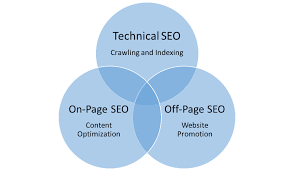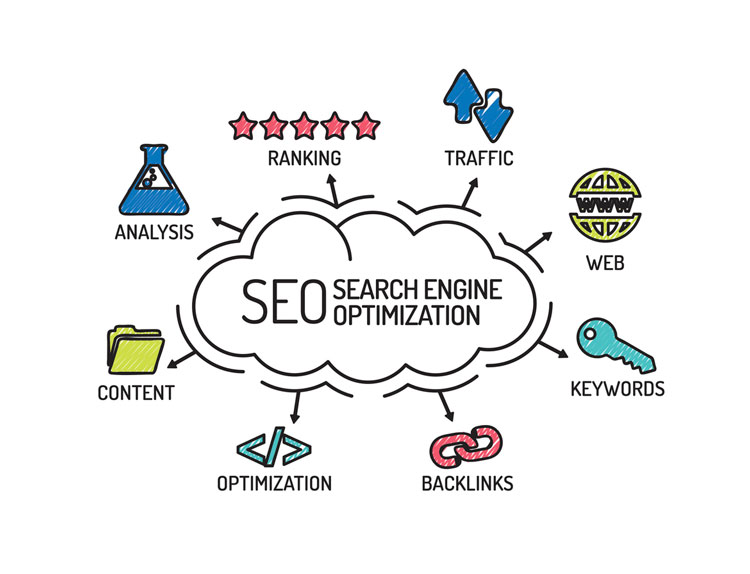
In the crowded digital landscape, getting noticed is a challenge. So, what is SEO? It’s the process of optimizing your website to rank higher on search engines, helping people find you more easily online. SEO is essential because it drives organic traffic, increases visibility, and boosts your business’s success in the competitive digital world.
What this thus comprises is some strategies that would encompass: keyword research, on-page optimization, technical SEO, off-page SEO, and more optimally with content creation-all aim towards maximizing organic traffic. SEO is the process which brings relevance and authority to a site, which in turn will increase the user experience. The organic traffic for your website will be increased depending upon the optimal SEO strategies as the user experience is enhanced.
SEO stands for Search Engine Optimization. The term related to making a website more visible for search engines such as Google is SEO. In simple words, SEO ensures that the website gets through improved ranking, this gives an added knowledge about what is Search Engine Optimization.
This includes improving individual web pages through good content and relevant keywords. search engine optimization refers to the general approach that involves technical skills and content creation, keyword research, link-building strategies for enhancing visibility of a website in search results.
There are certain types of search engine optimization, they can be grouped into 3 main types:

The process of optimizing individual web pages to raise their search engine ranking and increase relevant traffic is known as on-page SEO.
Giving search engine crawlers enough signals to comprehend the context and meaning of your material is the primary goal of on-page Search Engine Optimization.
Certain on page SEO factors:
Off-page Search Engine Optimization are the techniques and strategies used to enhance a website’s ranking on the results page of a search engine outside the website itself.It deals with building the reputation and authority of a website through external ways.
Key components of off page SEO:
Technical SEO refers to the practice of improving the general overall health of your website through its back end, making it more crawler-friendly. Technical SEO means that one enhances the technical parameters of a website to make it visible more often in search engines.
Technical SEO task include:
Local SEO is a specific branch of search engine optimization focused on optimizing any website to attract website traffic from local searches.
Key components of local SEO include:
SEO stands for search engine optimization. It is determined to be the process of encouraging a website’s presence in SERPs with a use of different tactics and strategies.

2. Indexing: The search engine indexes a page after it has been crawled. This indicates that a sizable database is used to evaluate and store the page’s content.
3. Ranking: The search engine ranks through a set of algorithms relevant sites it fetches from its index as a reply to a query entered by the user.
4. Keywords: SEO is the finding of appropriate keywords to be searched for the products or services by prospective clients.
5. On-page optimization: On-page SEO is a procedure of optimizing individual web pages with the objective of raising their rank on the search engine as well as the relevant traffic generated by the web pages. Such include: title tags, meta descriptions, headers, images, and internal links.
6. Off page optimization: Off-page SEO is actually the techniques and strategies used to improve a website’s position in search engine results that take place outside the actual website.
7. Technical SEO: Technical SEO essentially means optimizing the back-end health of the site to make it more crawler-friendly.
8. User experience: Websites with a positive user experience are given priority by search engines. Successful SEO is mostly dependent on elements like quick website loads, responsiveness on mobile devices, and simple navigation.
9. Content quality: It is essential to produce meaningful, high-quality content that satisfies user intent if you want to score highly in search results. Visitors are encouraged to share and spend more time on websites with engaging content.
10. Monitoring and Adjusting: The improvement of SEO is not a one-time affair but a process. It involves monitoring performance using tools like Google Analytics and Search Console.
The best way to learn SEO is to practice SEO. Try to apply various SEO techniques on website and monitor the activity.
If your rankings and organic traffic progresses, you are in the right direction. If not, you need to change your SEO strategy.
Steps included to learn SEO in best way:
Find out what is Search Engine Optimization and why it matters for your online presence.Learn about important terms including ranking criteria, search engines, and keywords
2. Read SEO guides and blog:
Explore the beginner friendly blogs and guide which cover fundamental principles. Learn the pattern and structure of blog which helps in creation of structured blog.
3. Learn keyword research:
Find out how to find the right keywords using tools like Ahrefs, SEMrush, and Google Keyword Planner.Find keywords that support the objectives of your article by practicing.
4. Explore Off-page and On-page SEO:
Learn to optimize content, headers, meta descriptions, and title tags according to the target keywords you are writing about. You may discover just how important mobile optimization and user experience are. Understand the role of backlinks and how you may leverage capability to promote them using content marketing and outreach.
5. Stay updated with recent trend:
Keep learning about the latest SEO trends and algorithm updates to refine and improve your SEO strategy.
6. Monitor and Analyze performance:
Track traffic and performance indicators with the aid of solutions such as Google Analytics.Continuously change your strategies based on data insights and changing trends.These are the steps to build a strong foundation on SEO
While search engine optimization, or SEO, could be defined as the most crucial aspect of digital marketing. Search Engine Optimisation mainly aims at improving websites’ status in the ranking tables of search engines, but digital marketing encompasses every online marketing activity- such as social media, email marketing, content marketing, and paid advertising.
Optimizing a website for search engines (SERPs) can help you reach more potential customers and complement your broader digital marketing campaigns. This process is known as SEO.
SEO enhances organic search visibility, driving more website traffic . This is essential for digital marketing strategy to increase brand awareness. SEO provides valuable insights and this in turn help building greater digital marketing strategies.
SEO is more cost effective than paid advertising in long term. While digital marketing includes paid channels and organic traffic.
Improving a website’s exposure in search engine rankings requires SEO, or search engine optimization. To draw in appropriate organic traffic, content, keywords, and technological components must all be optimized. Higher conversion rates are the result of effective SEO methods that enhance user experience and raise brand awareness through this we can get an idea about what is Search Engine Optimization. Through the use of local SEO and backlink building, businesses can more successfully reach their target audience. In the end, SEO is an essential part of any effective online presence and not just a marketing strategy.
Don’t miss our future updates! Get Subscribed Today!
©2023. IFDM . All Rights Reserved.